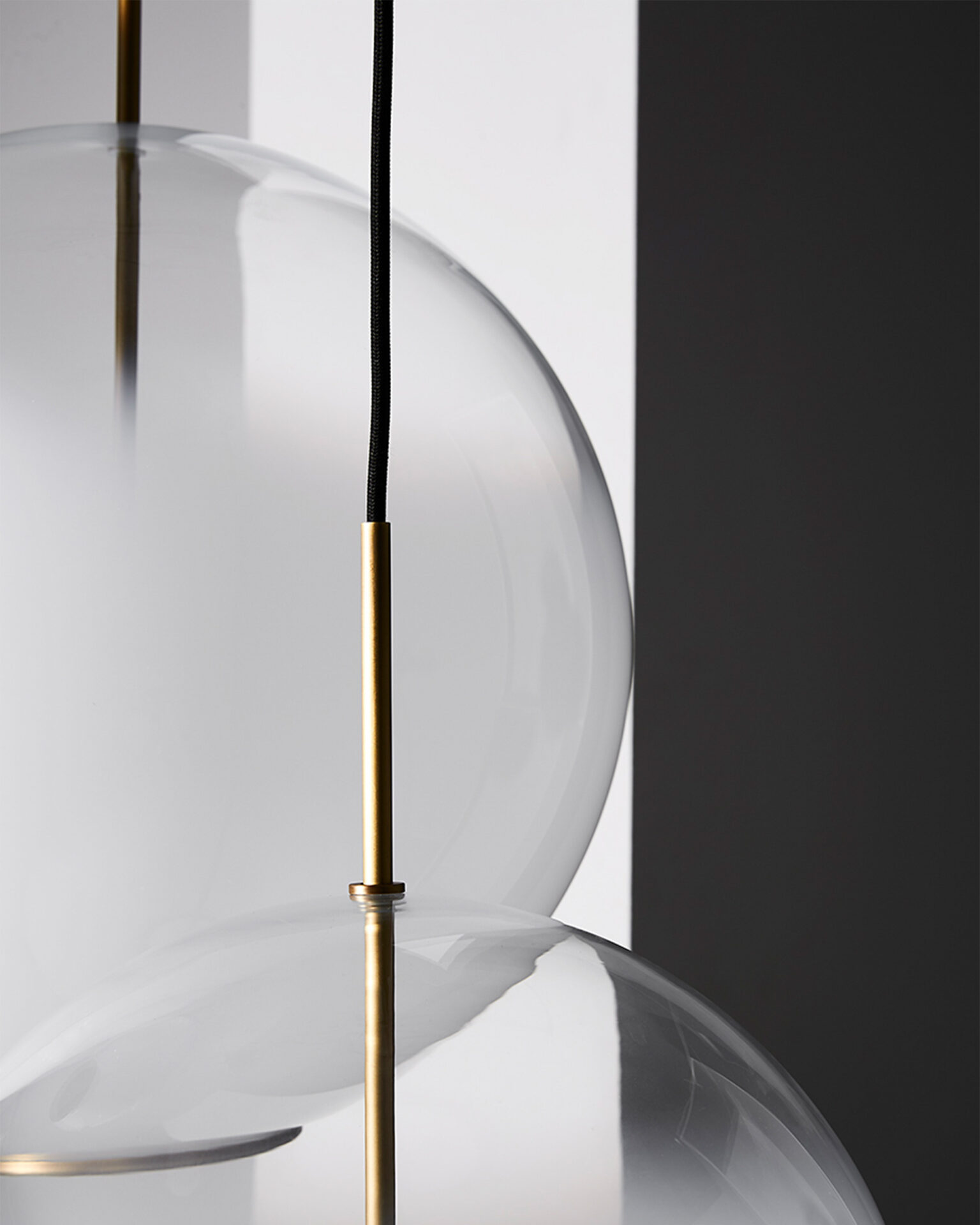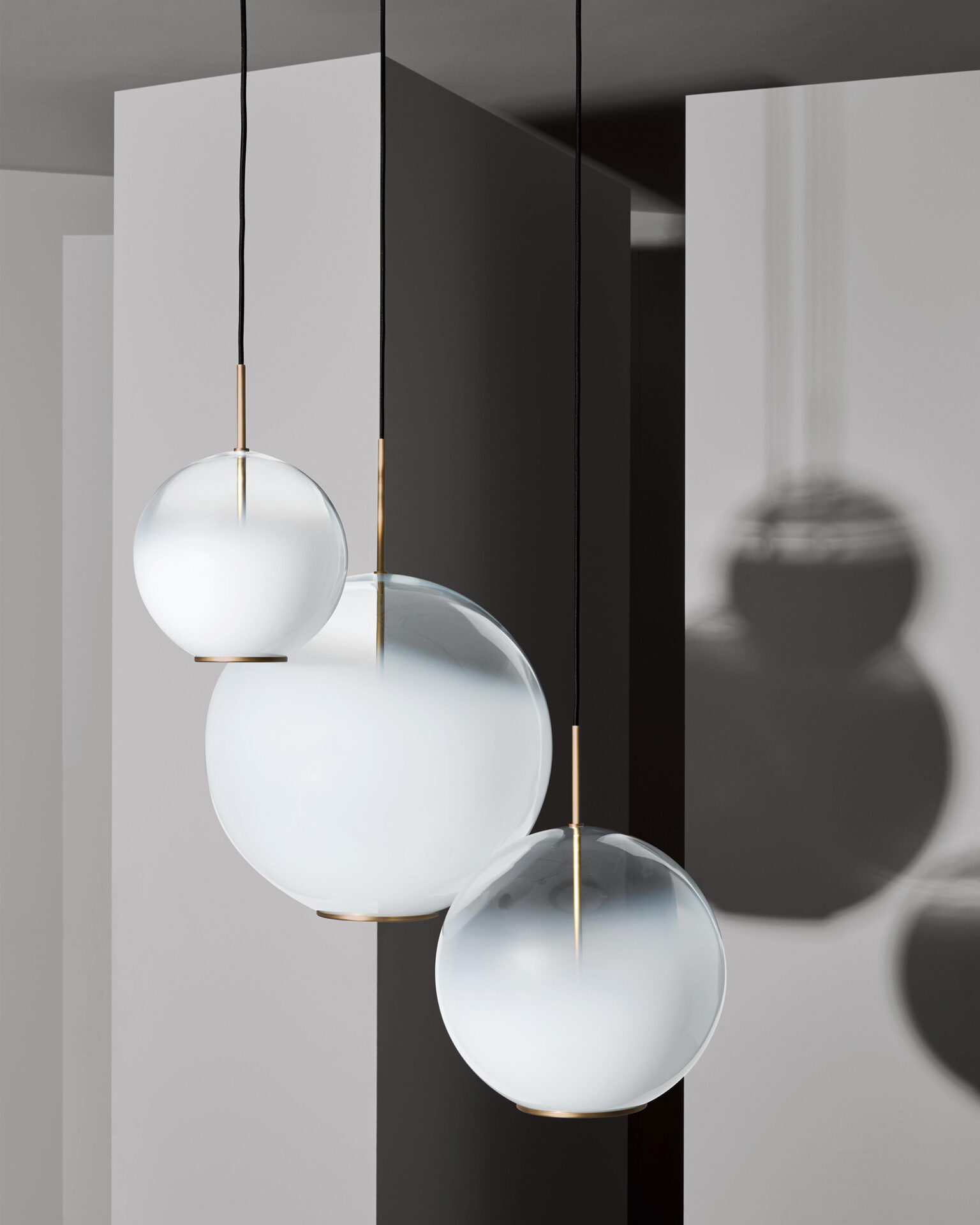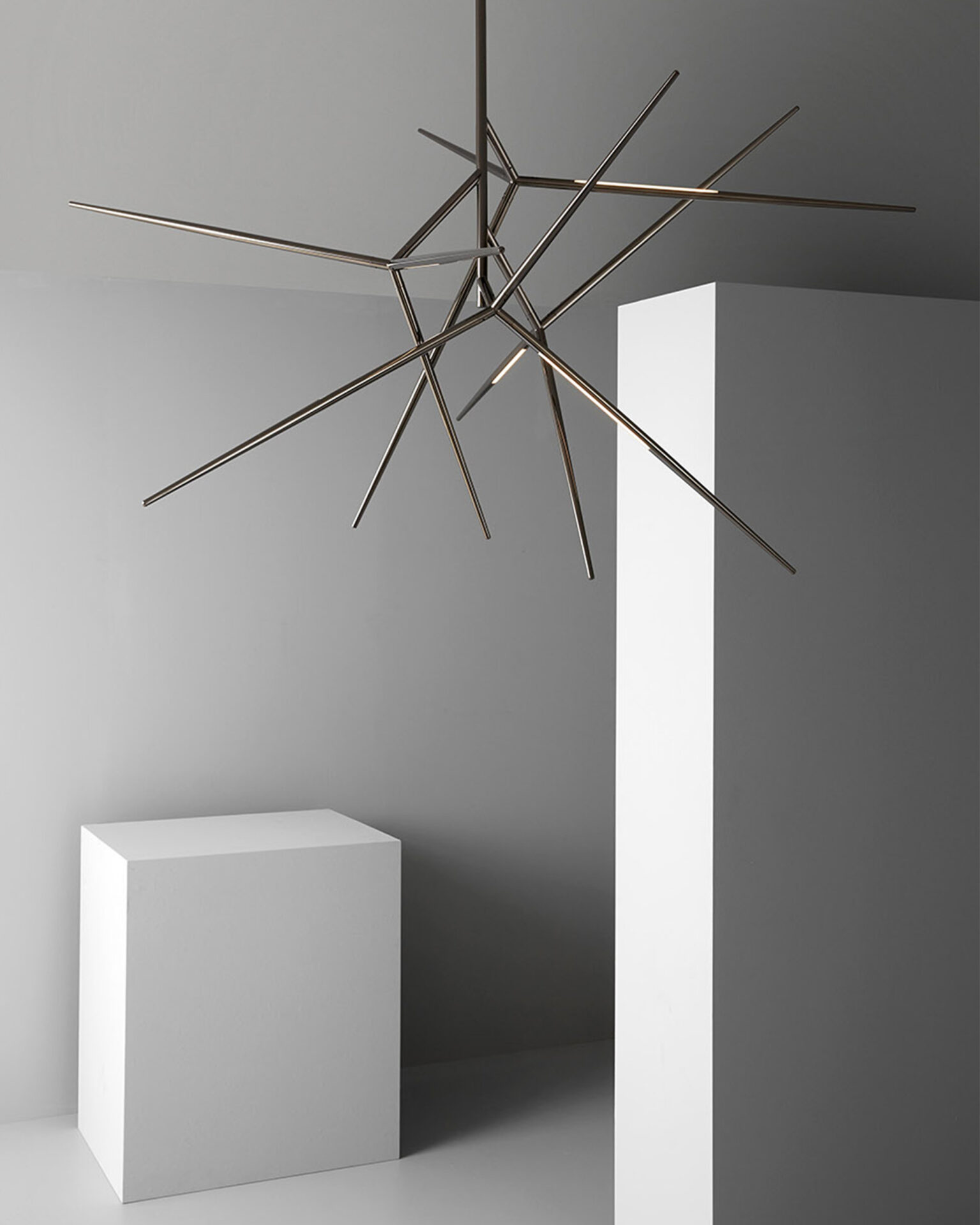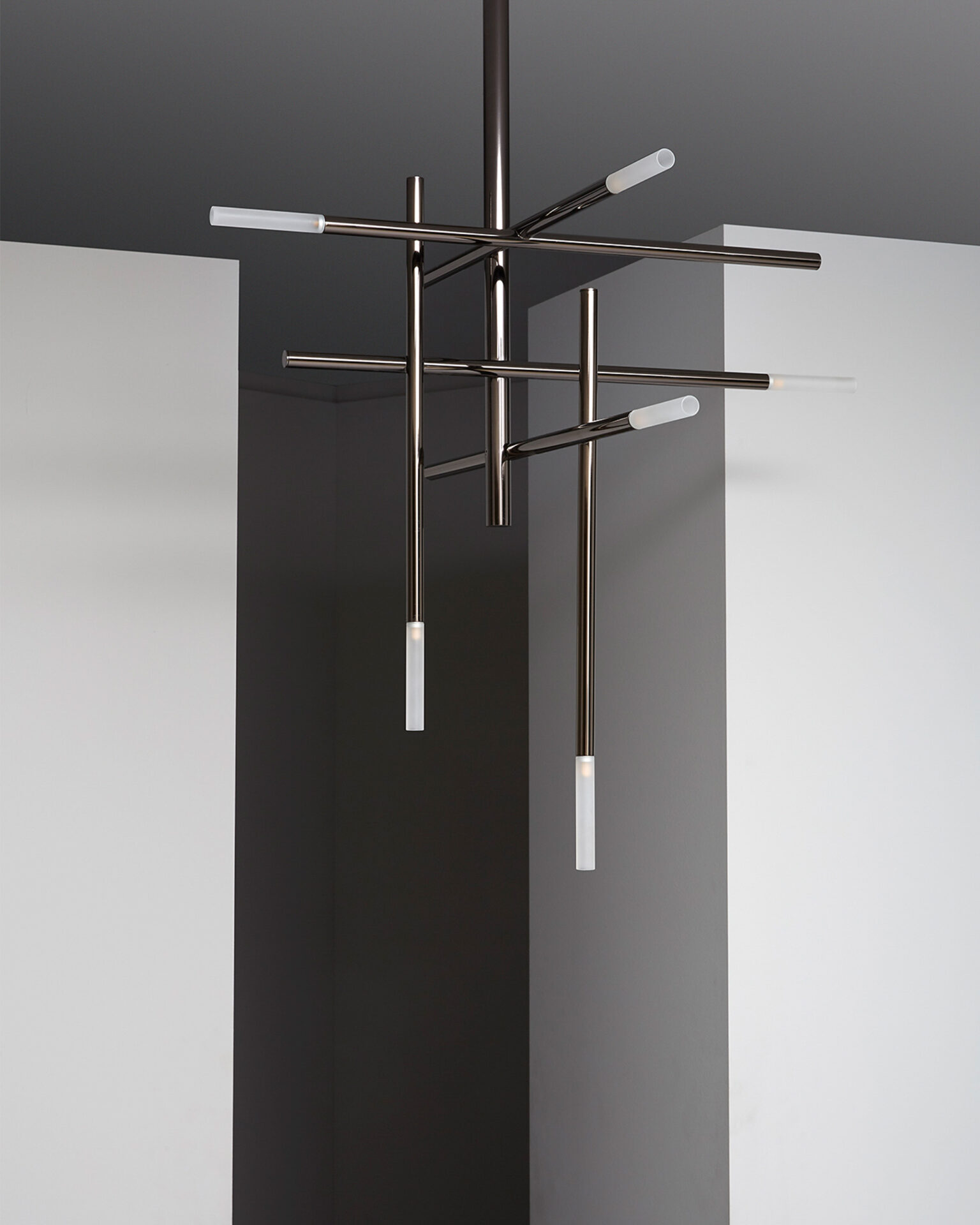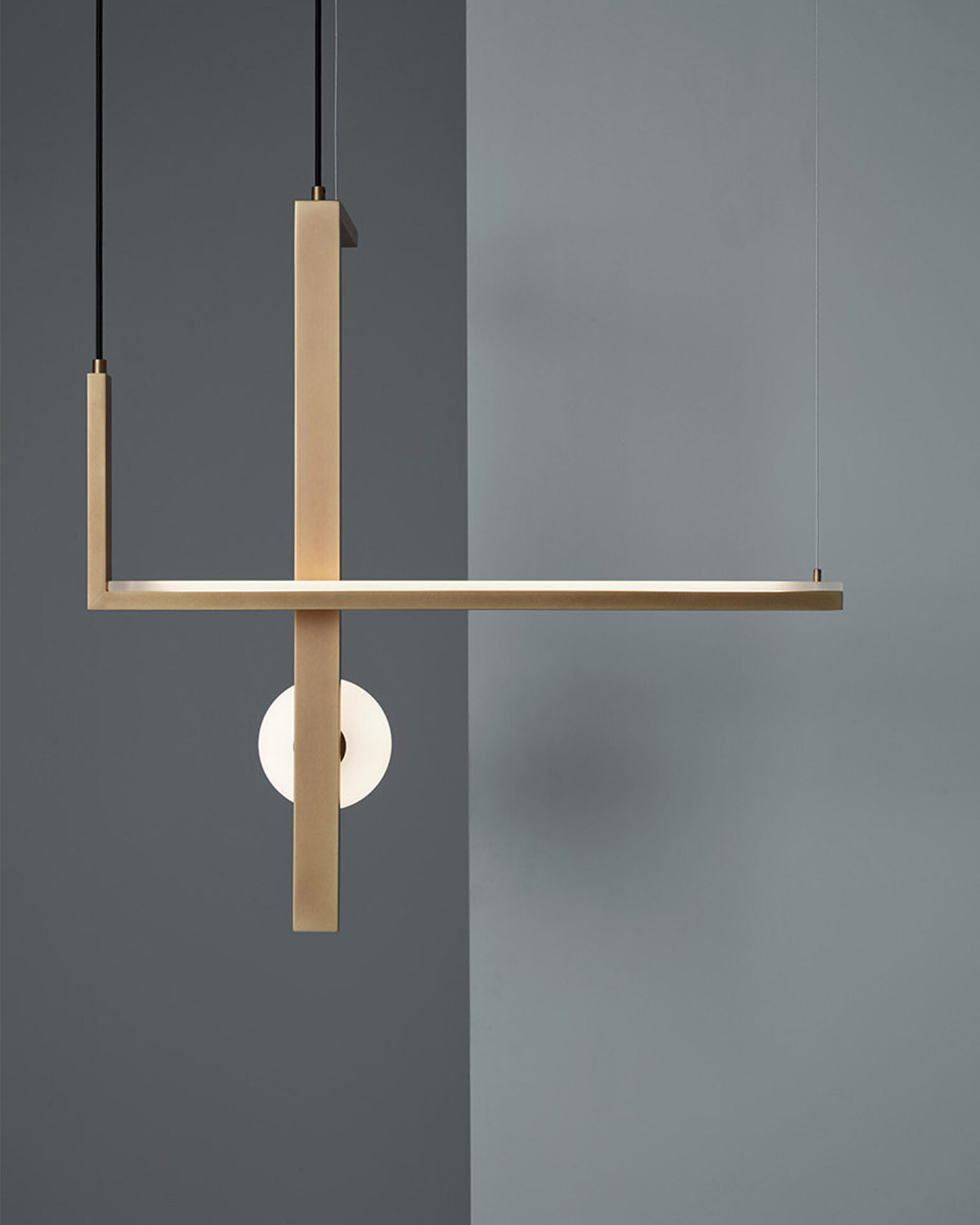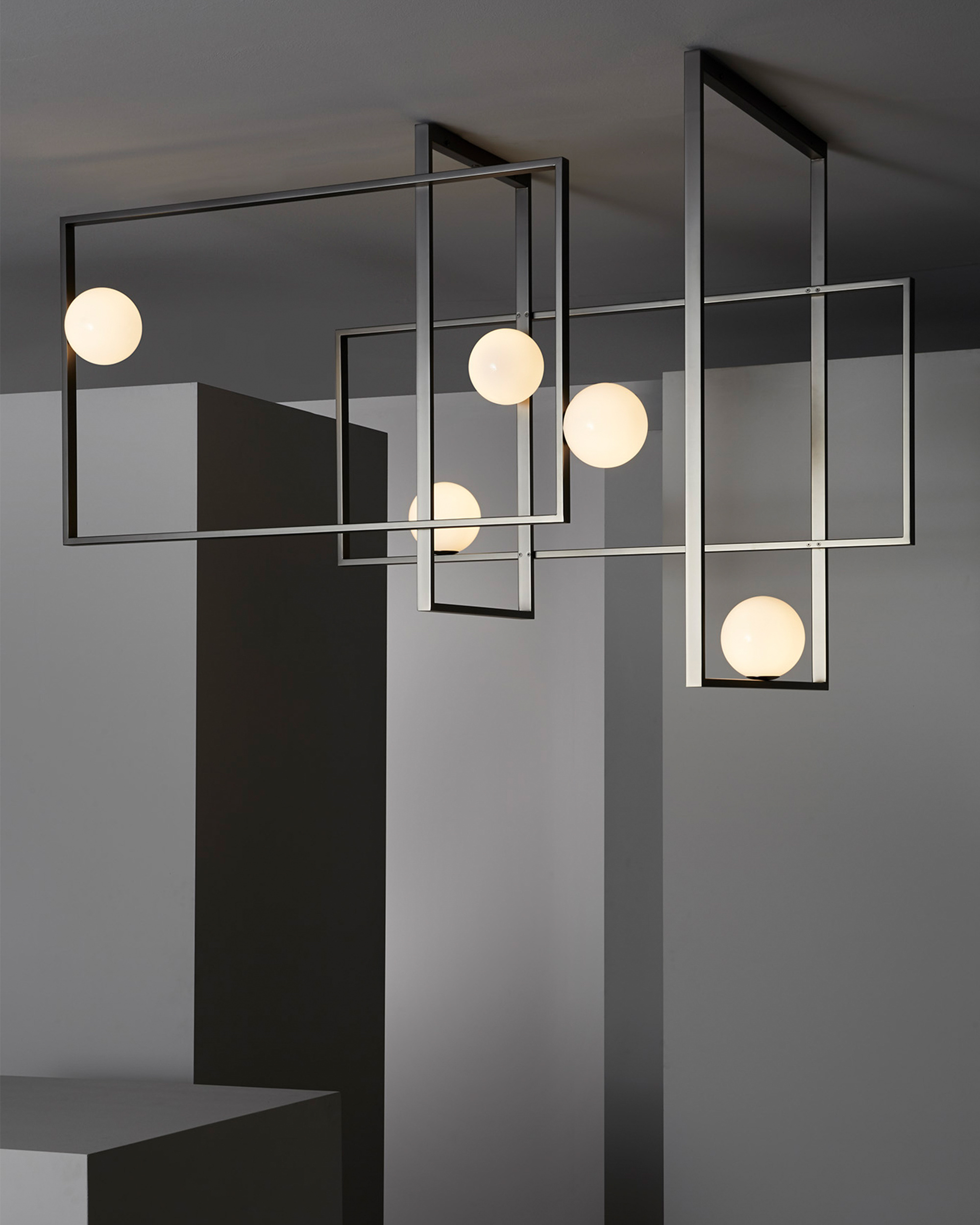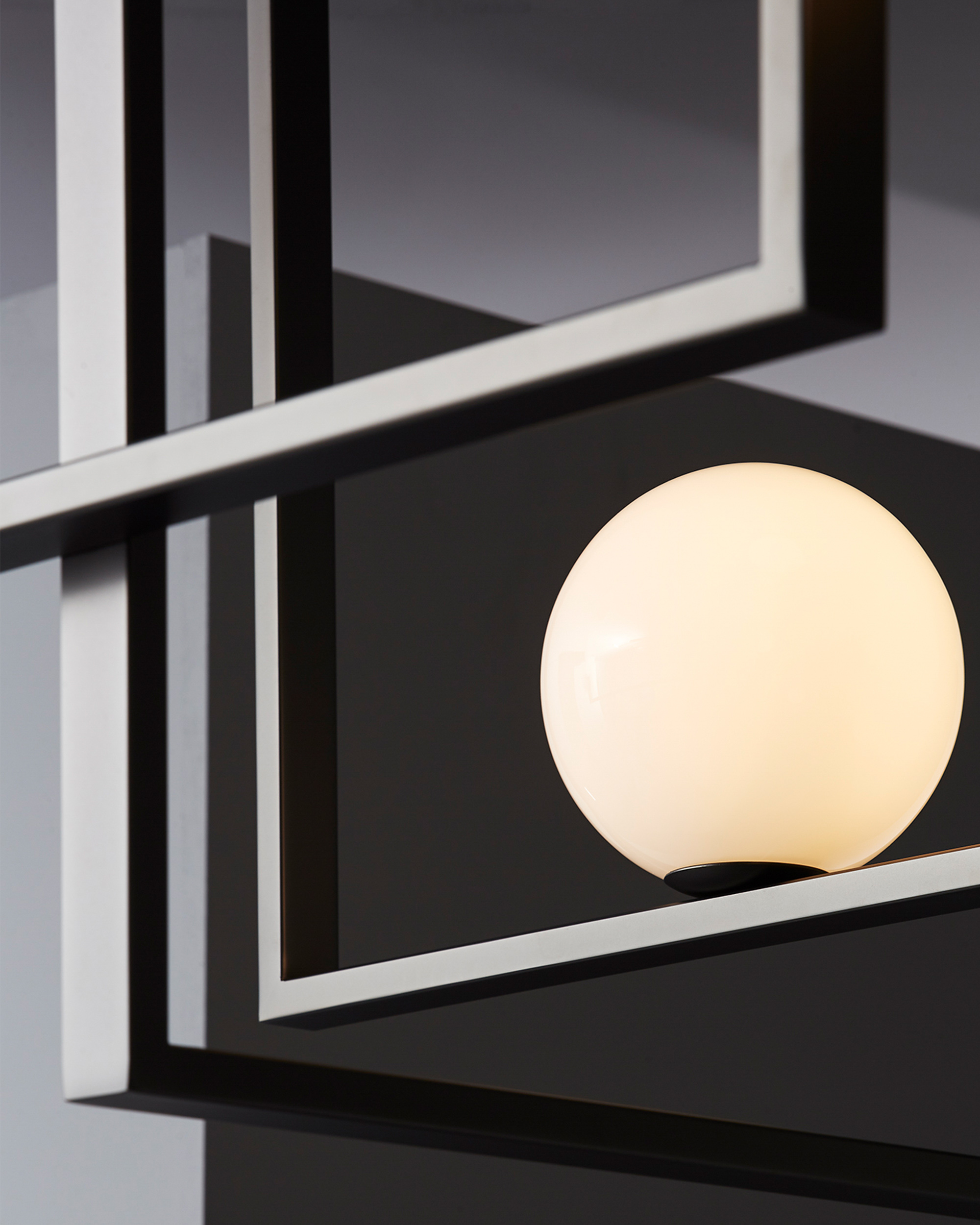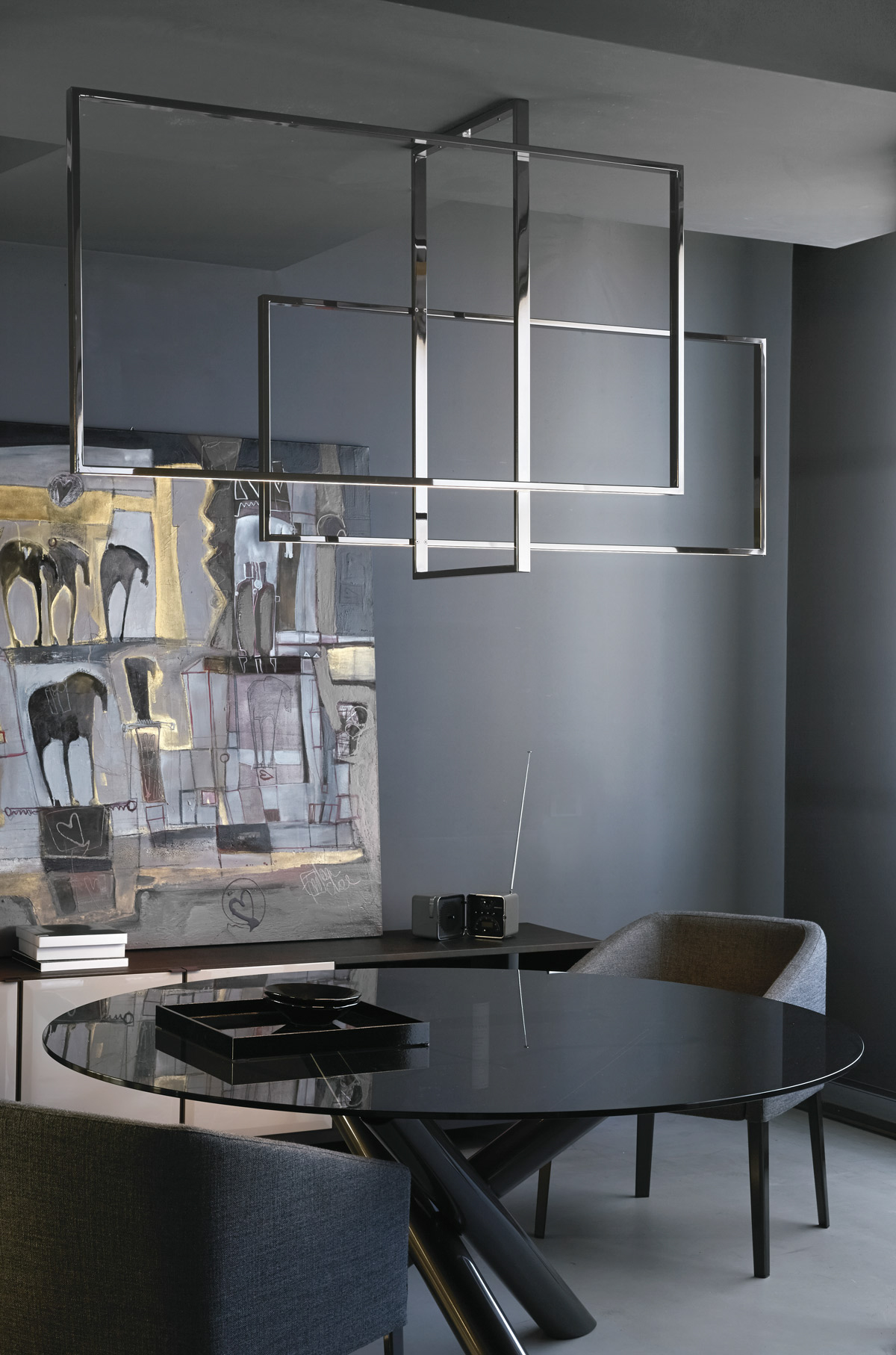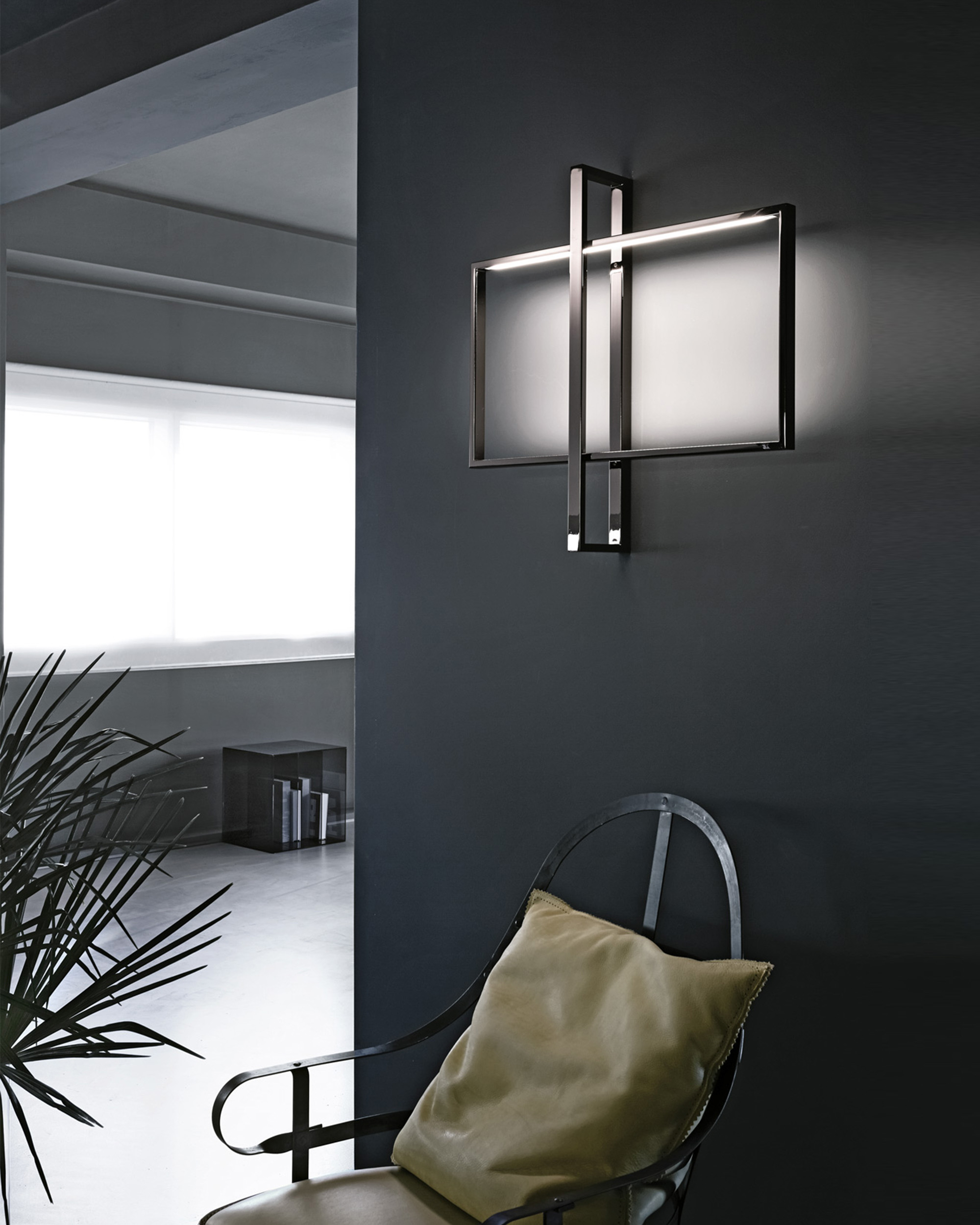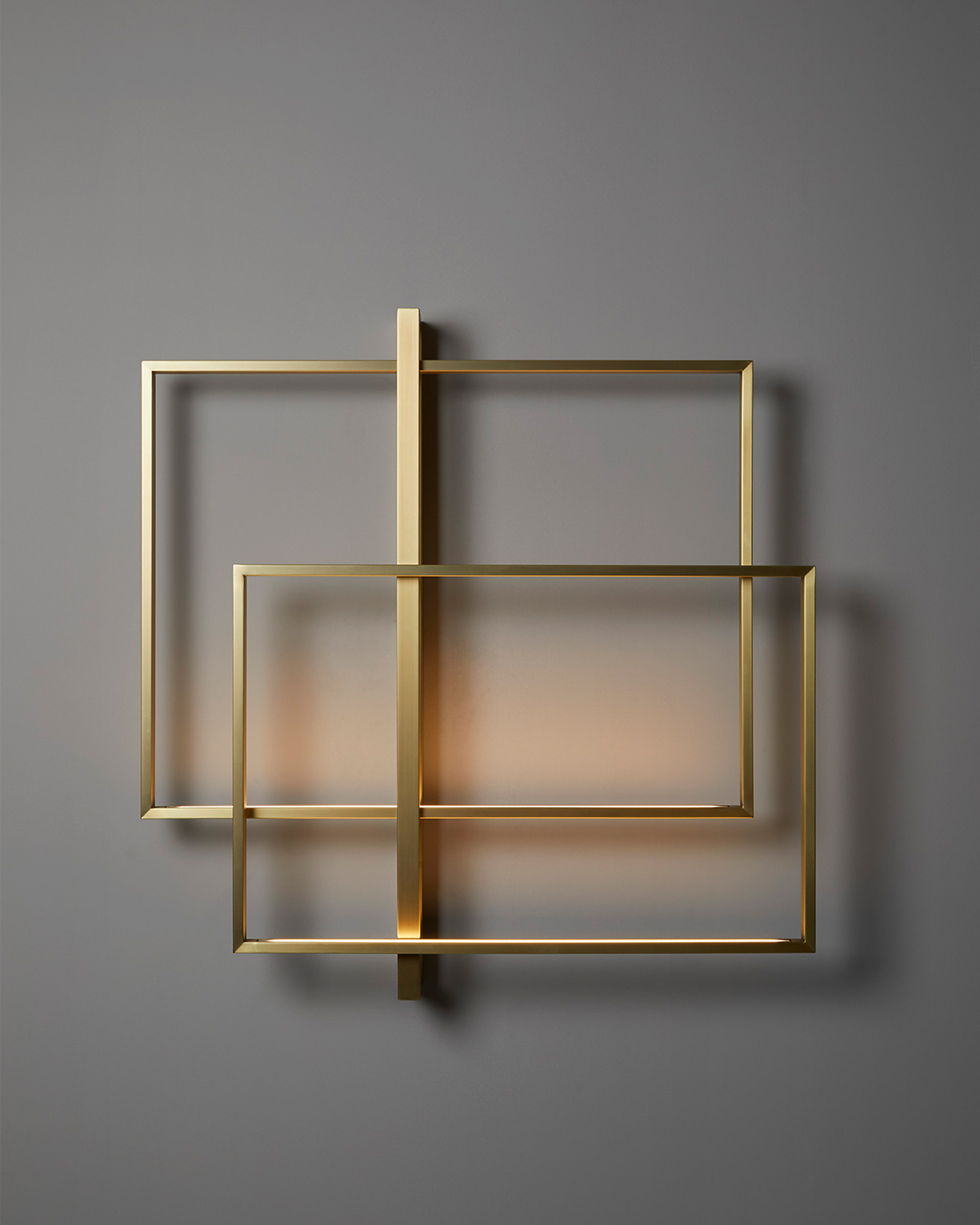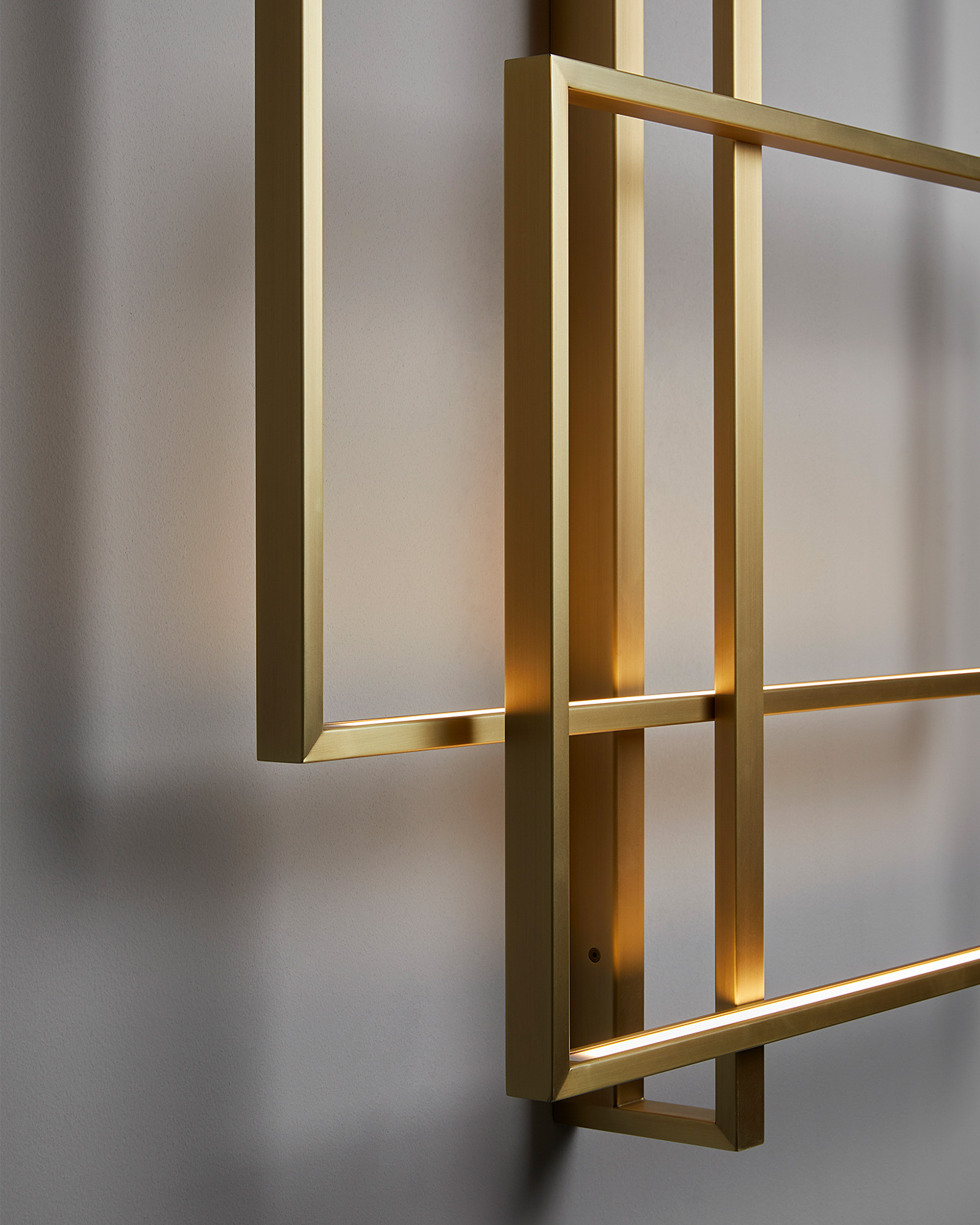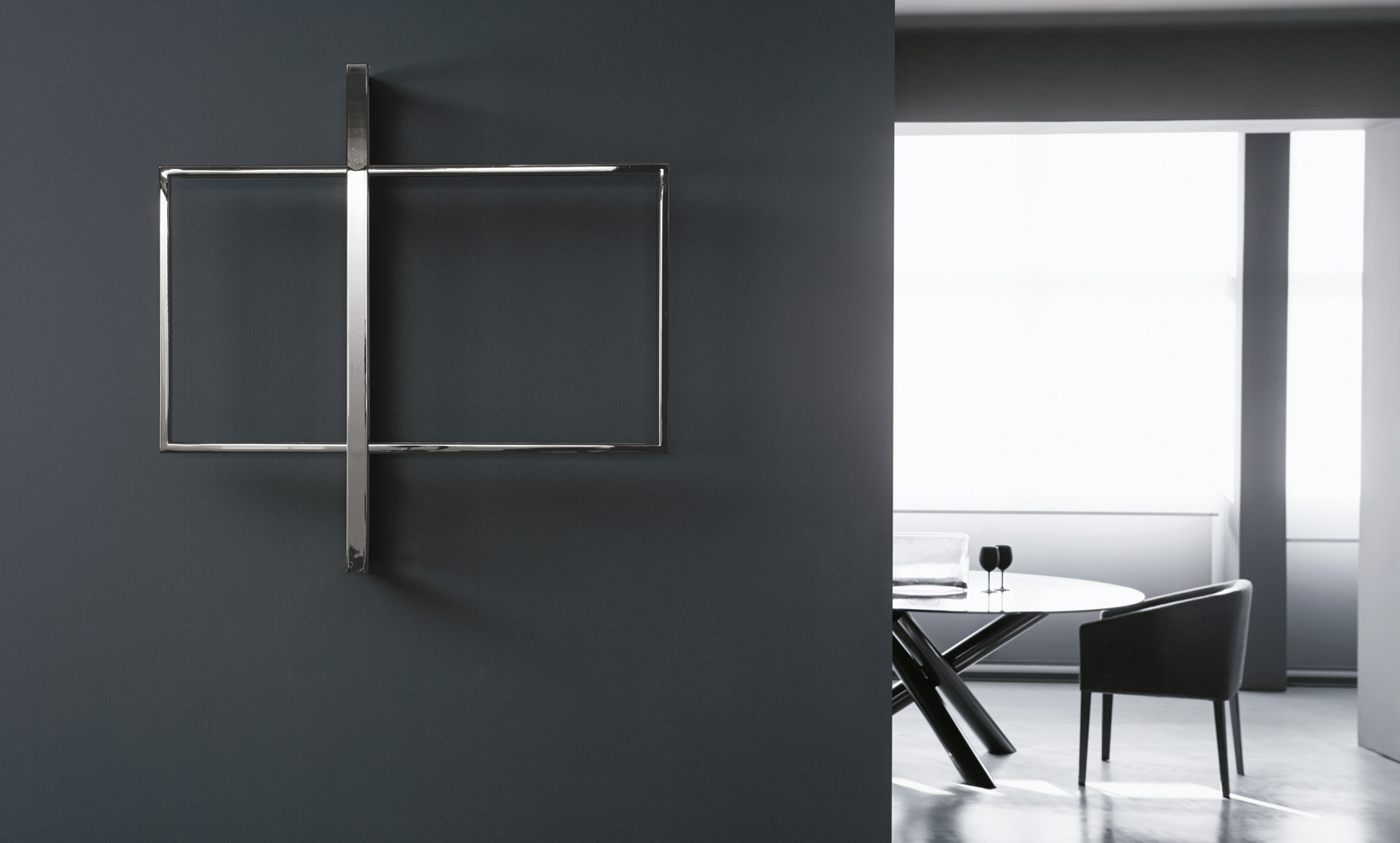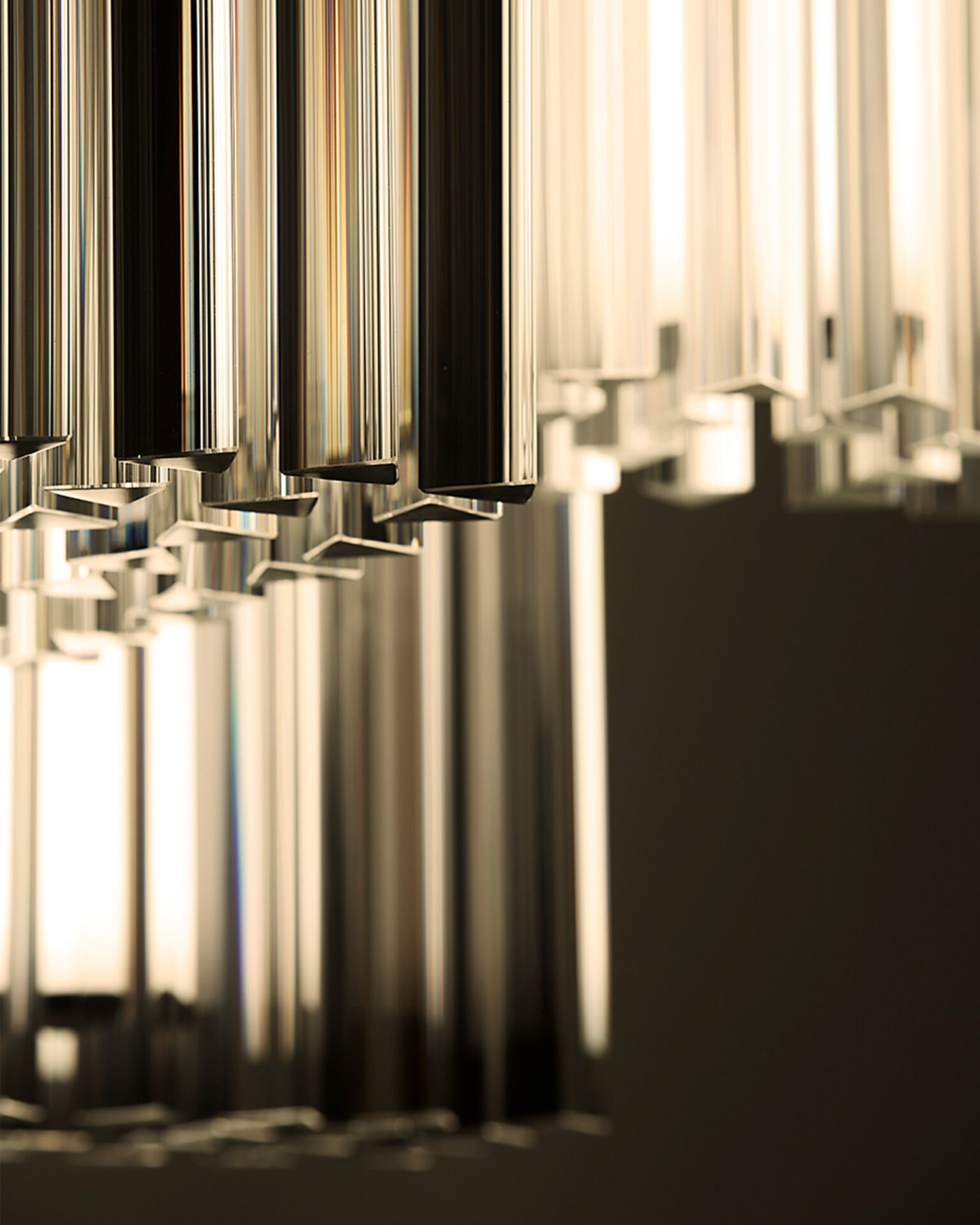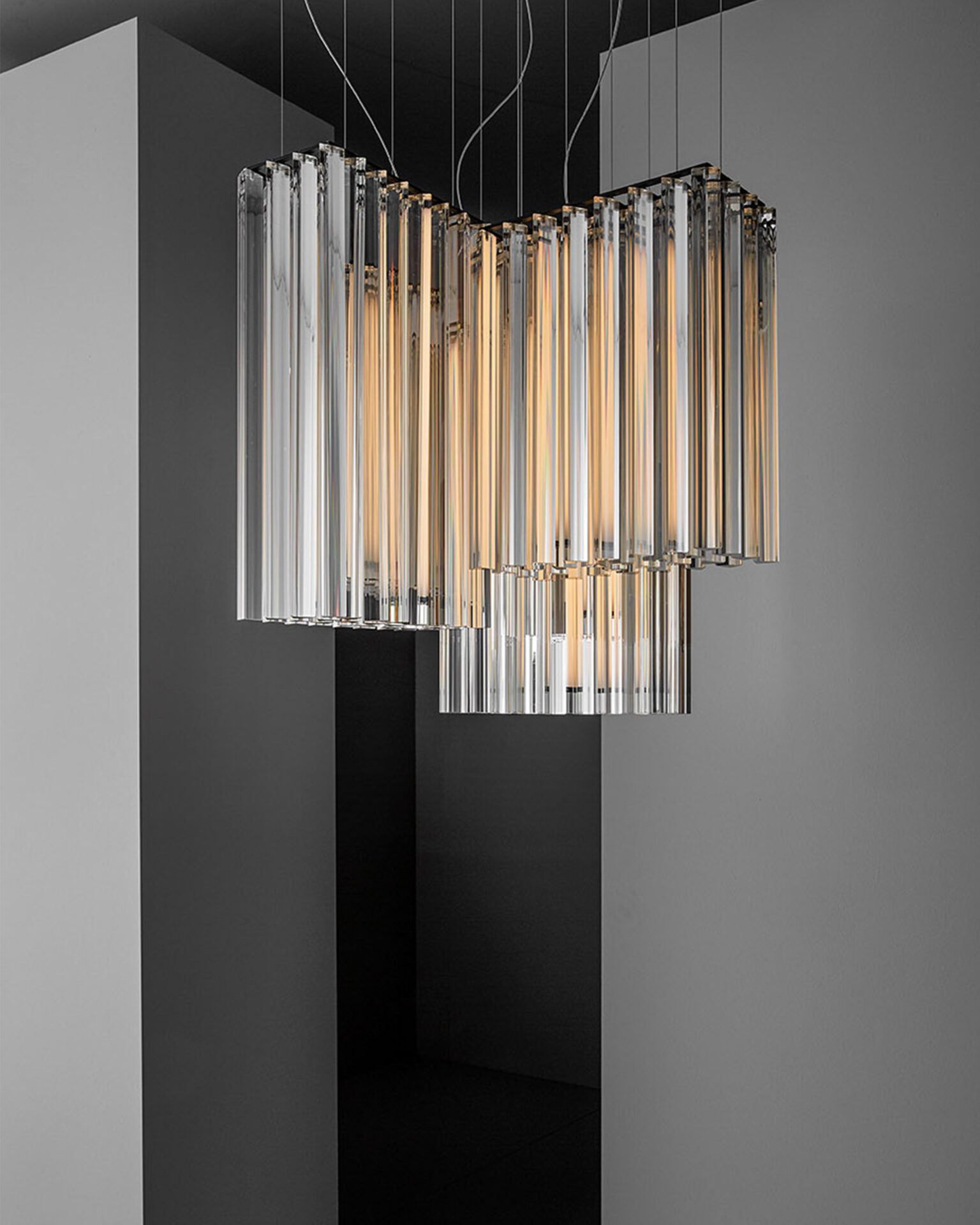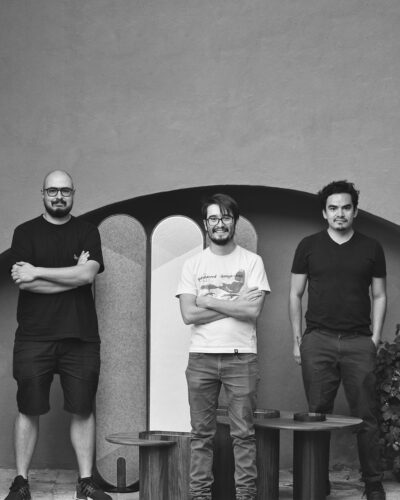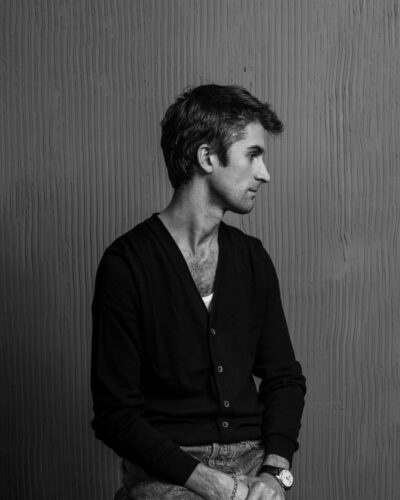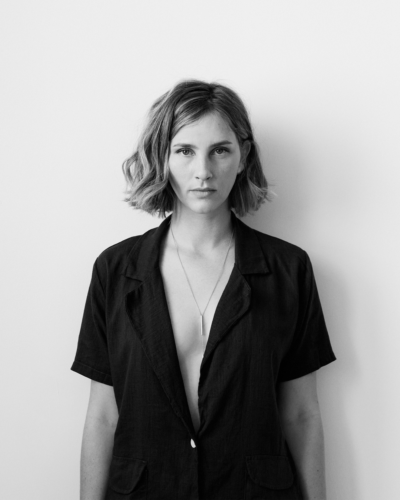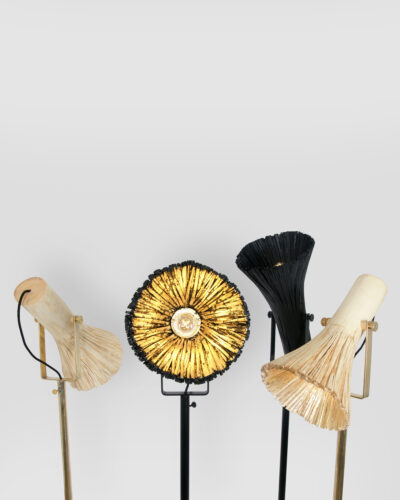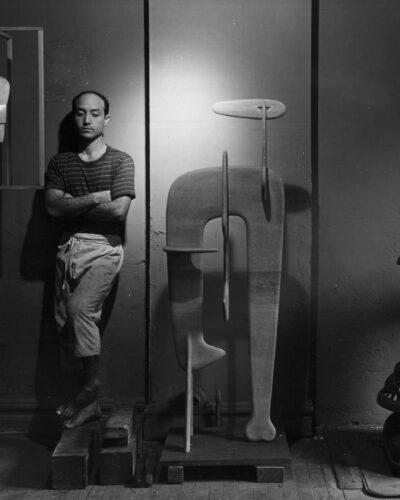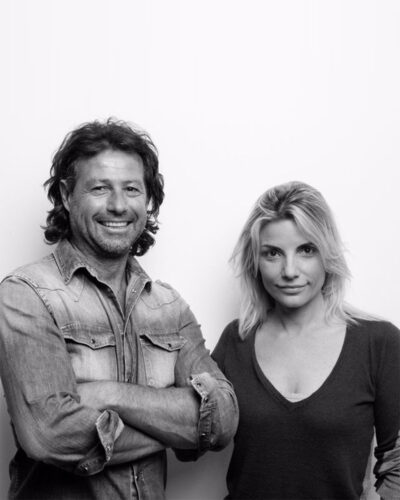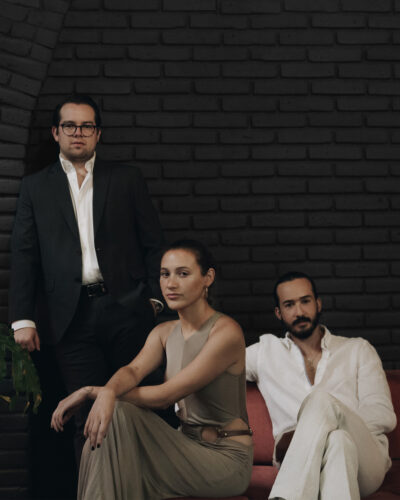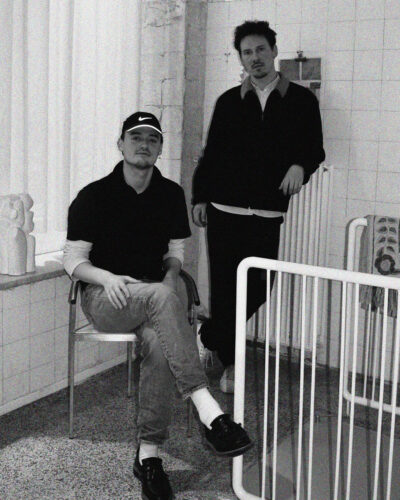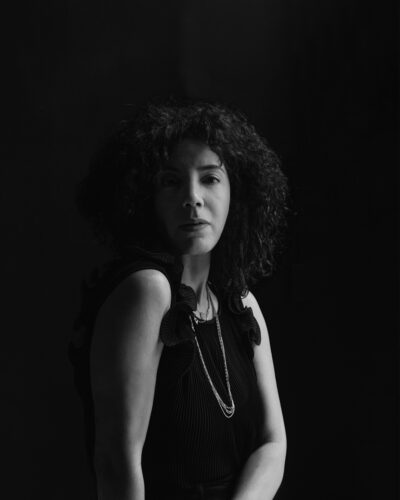Polished surfaces – in gold, chrome and black nikel – offer high-voltage luxury thanks to their glossy, reflective look; matt black nickel has a modern, sculptural feel; delabré brass and copper have a subtle lustre and a warm glow; and antique copper, flecked and swirled with turquoise, adds a layer of complexity and a sense of history – of time passing.
There is a strong interplay between texture, quality, and the overall design in the work of VeniceM – with each element working in harmony with the others. The limited palette of simple, geometric shapes draw the eye to the finer details, focusing on the beauty of the surface’s patina, and the seamless interactions between metal and glass. “Usually I work with basic forms and shapes – rectangles, circles, squares. I like to work with these shapes,” says Tonetto, adding that, “I always prefer less than more.”
